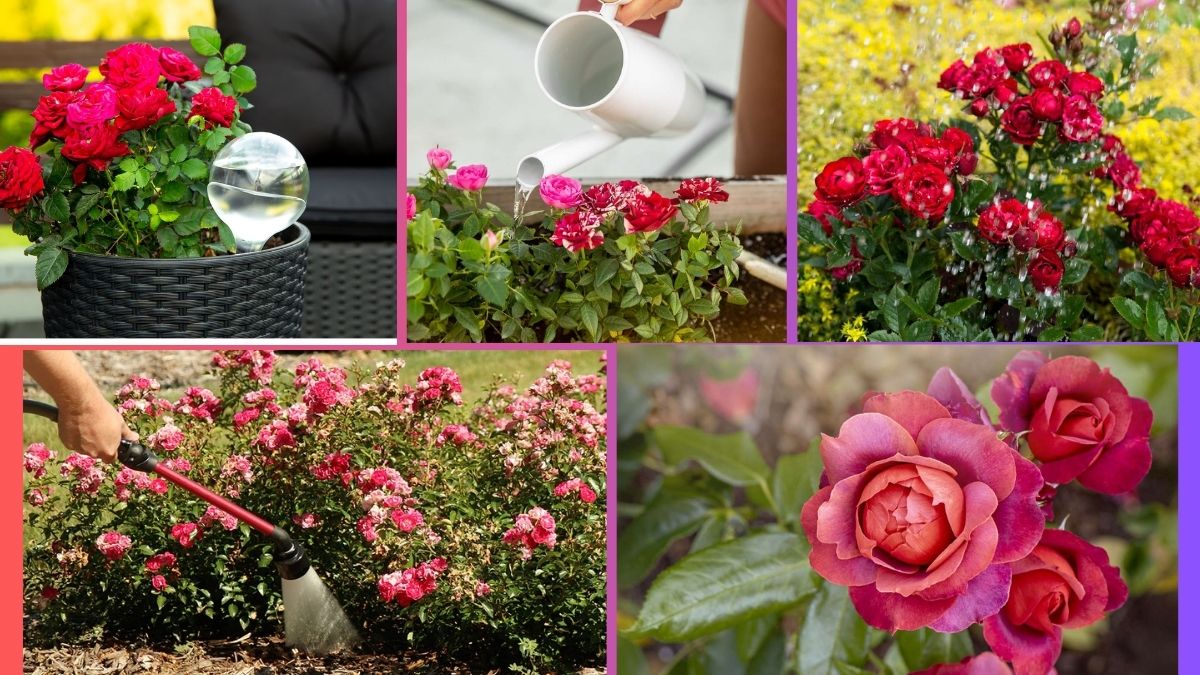Roses, often dubbed the “queen of flowers,” have long symbolized love, beauty, and elegance. From classic English gardens to modern patios, these timeless blooms continue to enchant gardeners and flower enthusiasts around the world. But while roses are admired for their fragrance and striking appearance, their care — particularly their watering needs — is often misunderstood.
Watering roses properly is essential for maintaining healthy growth, vibrant blooms, and disease resistance. Too little water can lead to stunted growth and wilting, while too much can cause root rot and fungal diseases. So, how often should you water a rose plant? This detailed article will walk you through everything you need to know — from seasonal watering schedules to factors affecting water needs and expert care tips.
Understanding a Rose’s Watering Requirements
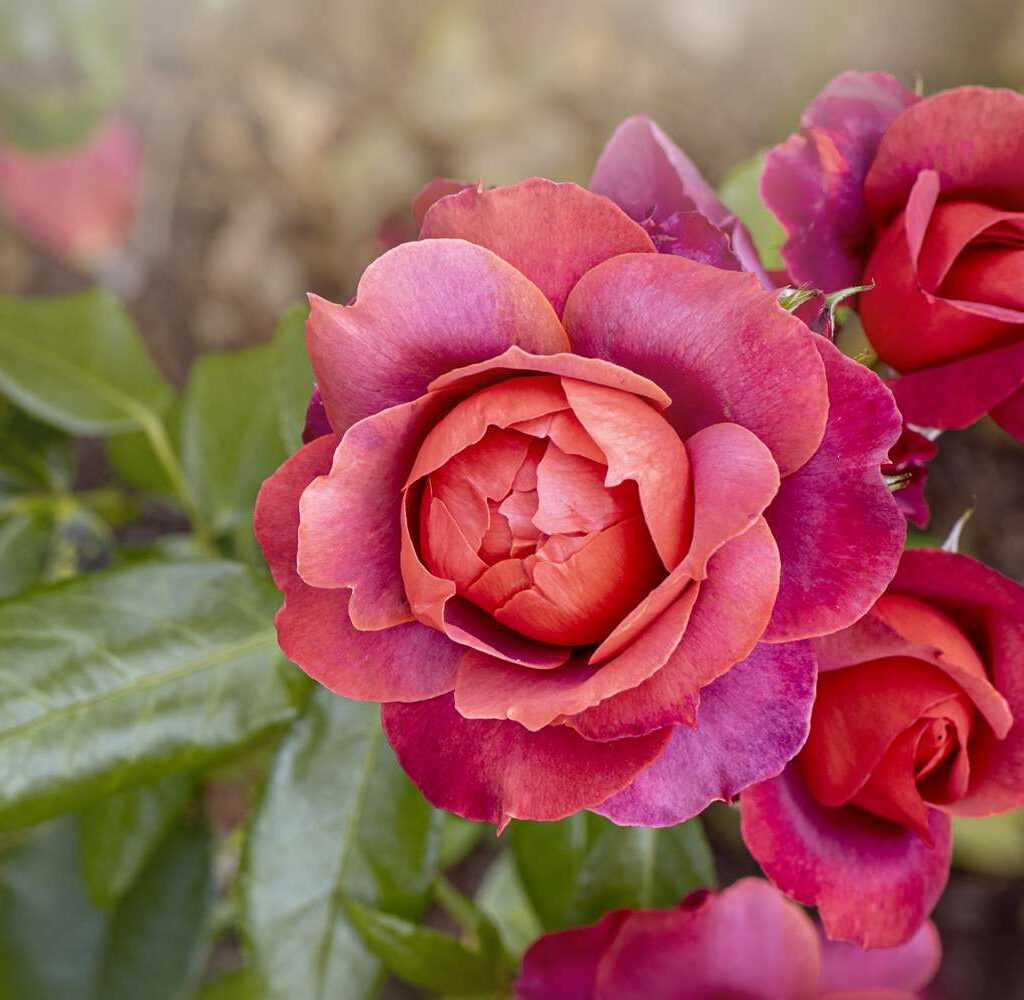
Roses are deep-rooted perennials that thrive in sunny locations with well-draining, nutrient-rich soil. Their deep root systems allow them to access moisture below the soil surface, making them somewhat drought-tolerant once established. However, consistent and adequate watering remains crucial, especially during the growing and blooming seasons.
The ideal approach is to water deeply but infrequently, allowing the soil to dry slightly between waterings. This encourages roots to grow deep, resulting in stronger, healthier plants that can better tolerate heat and dry spells.
How Often Should You Water a Rose Plant?
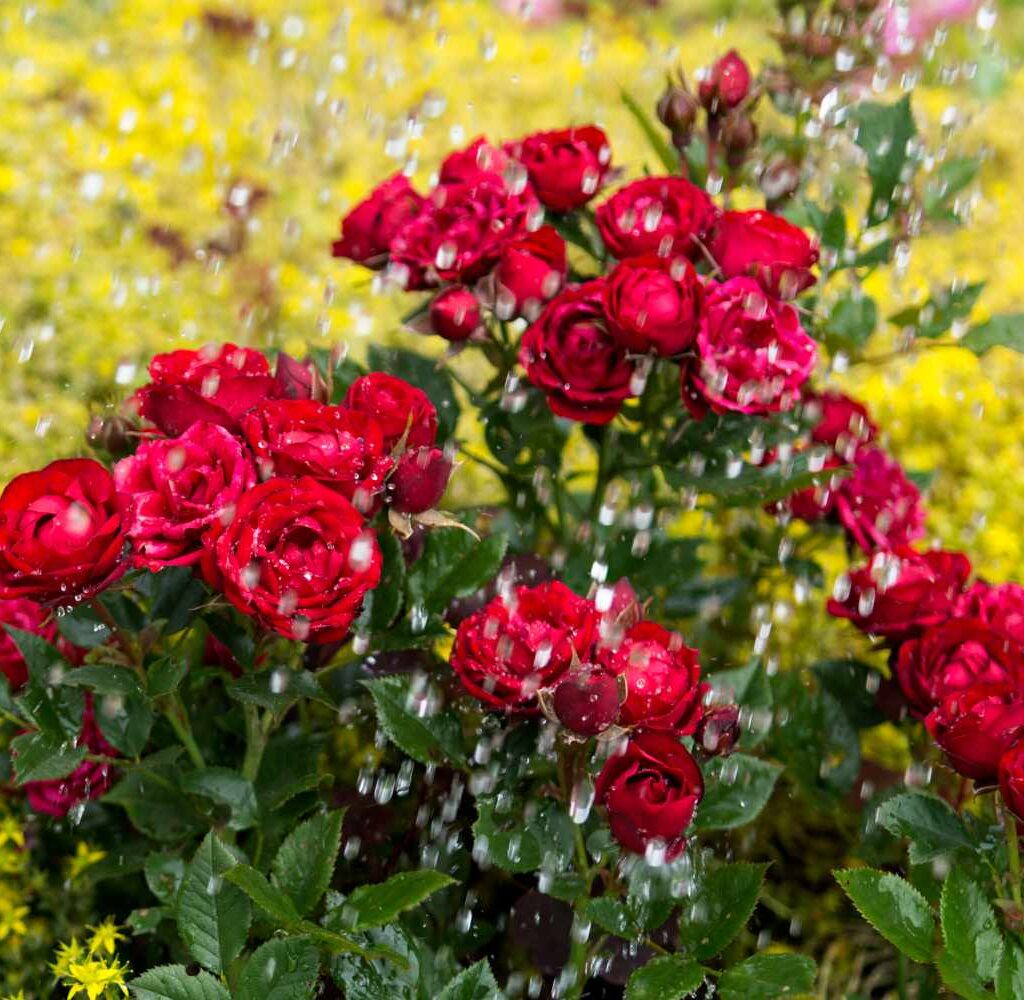
General Watering Guidelines:
- Newly Planted Roses: Water every 2–3 days for the first few weeks until established.
- Established In-Ground Roses: Water once or twice a week, providing a deep soak.
- Potted Roses: Water every 1–2 days in hot weather, and every 3–4 days in cooler conditions.
Important Rule: Always water at the base of the plant and avoid overhead watering, which can promote fungal diseases.
Seasonal Watering Schedule for Roses
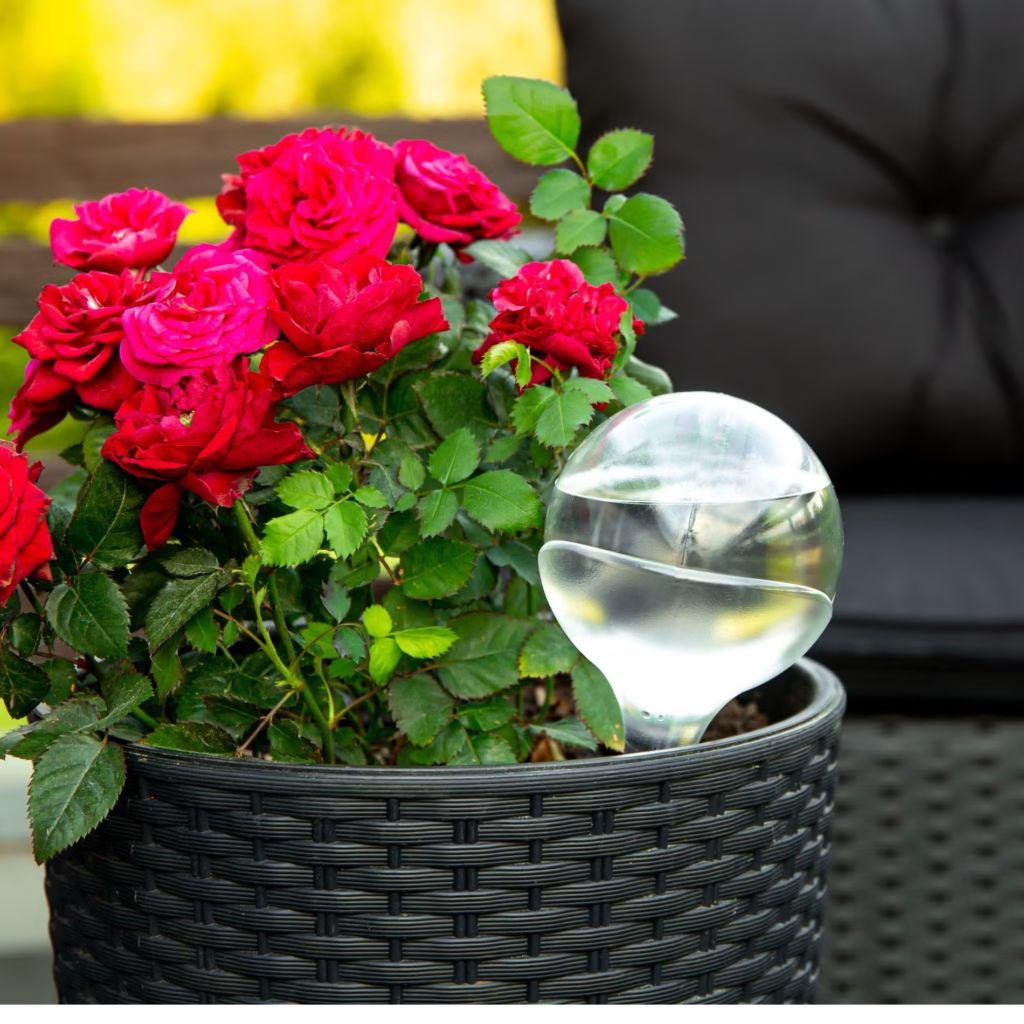
Spring and Summer (Active Growth & Blooming)
During warmer months, roses experience rapid growth and blooming, which increases their water needs.
- Newly Planted Roses: Water every 2–3 days or when the top 2 inches of soil feel dry.
- Established In-Ground Roses: Water once or twice a week, depending on rainfall and temperature.
- Potted Roses: Water daily in very hot weather, or every other day in moderate heat.
Tip: Water early in the morning to minimize evaporation and reduce the risk of fungal diseases.
Autumn (Slowing Growth)
As the growing season winds down, roses require less water.
- In-Ground Roses: Water once a week.
- Potted Roses: Water every 3–4 days or when soil feels dry.
Winter (Dormancy)
In winter, most roses go dormant and need minimal watering, especially in regions with rainfall.
- In-Ground Roses: Water once every 2–3 weeks if the weather is dry.
- Potted Roses (Outdoors): Water once every 7–10 days if needed.
- Indoor Potted Roses: Water every 10–14 days, depending on indoor heat.
Factors That Affect Rose Watering Frequency
Several environmental and plant-specific factors influence how often roses should be watered:
Climate and Weather
- Hot, dry, or windy conditions: Increase evaporation, requiring more frequent watering.
- Cool, humid, or rainy weather: Reduces water needs.
Soil Type
- Sandy soil: Drains quickly, requiring more frequent watering.
- Clay soil: Retains moisture longer but must have good drainage to avoid waterlogging.
- Loamy soil: Ideal for roses, holding moisture while allowing excess water to drain.
Plant Maturity
- Young roses: Have shallow roots and require more frequent watering.
- Established roses: Have deep root systems and can go longer between waterings.
Container Size and Type
- Small pots dry out faster than large ones.
- Terracotta pots allow moisture to evaporate through their walls.
- Plastic and glazed ceramic pots retain moisture longer.
How to Properly Water a Rose Plant

Water Deeply and Thoroughly
When watering, soak the soil around the rose bush to a depth of at least 12–18 inches. This ensures moisture reaches the entire root system.
Check Soil Moisture Before Watering
Use your finger or a moisture meter to test soil moisture. If the top 2 inches feel dry, it’s time to water.
Avoid Overhead Watering
Water at the base of the plant to keep foliage dry, reducing the risk of diseases like black spot, powdery mildew, and rust.
Use Mulch to Retain Moisture
Apply a 2–3 inch layer of organic mulch around the base of your roses to conserve soil moisture, regulate temperature, and suppress weeds.
Use Room-Temperature Water
Cold water can shock plant roots. Use water that’s close to ambient outdoor temperature.
Signs of Overwatering and Underwatering in Roses
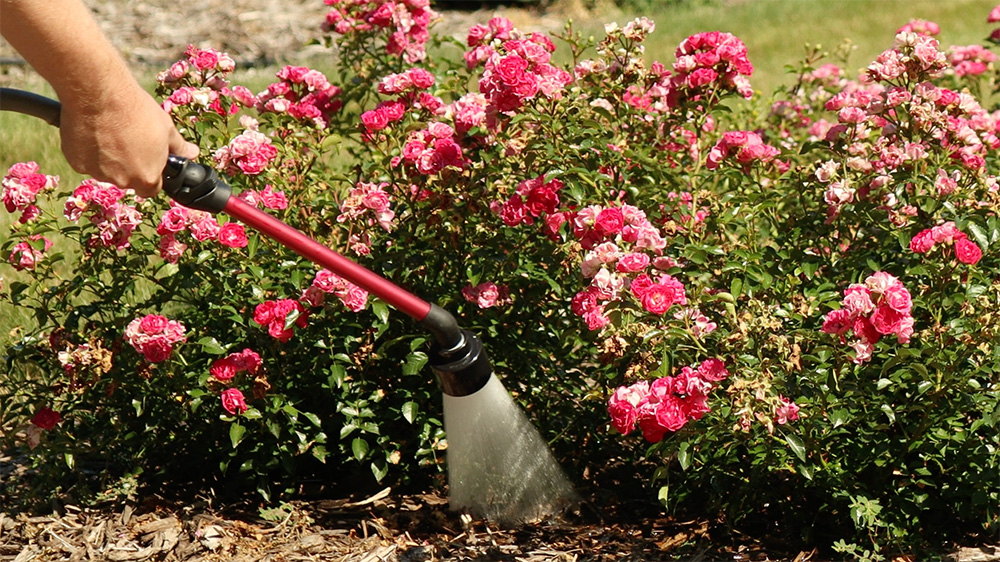
Recognizing early signs of water stress is crucial for rose health.
Signs of Overwatering:
- Yellowing leaves, especially near the base
- Wilting despite moist soil
- Black, mushy roots (root rot)
- Fungal issues like powdery mildew
Solution: Improve soil drainage, reduce watering frequency, and remove affected leaves.
Signs of Underwatering:
- Wilting, drooping leaves
- Dry, crispy leaf edges
- Slow or stunted growth
- Dry soil pulling away from the plant base
Solution: Water deeply and adjust the watering schedule, particularly during hot or dry spells.
Special Watering Tips for Potted Roses
Potted roses dry out faster than garden-grown plants and require extra care:
- Use well-draining potting soil.
- Ensure pots have multiple drainage holes.
- In hot weather, check soil moisture daily.
- Water until it flows freely from the drainage holes.
Additional Rose Care Tips
Watering is just one aspect of rose care. Here are a few other essentials for thriving, beautiful roses:
Prune Regularly
Remove dead, diseased, or weak stems to improve air circulation and promote healthy growth.
Provide Full Sun
Roses thrive with 6–8 hours of direct sunlight daily.
Fertilize During the Growing Season
Feed roses every 4–6 weeks with a balanced rose fertilizer to support continuous blooms.
Watch for Pests
Monitor for aphids, spider mites, and Japanese beetles. Remove manually or use insecticidal soap as needed.
Conclusion
So, how often should you water a rose plant?
It depends on the season, plant maturity, soil type, and weather:
- Newly planted roses: Water every 2–3 days until established.
- Established in-ground roses: Water once or twice a week during active growth.
- Potted roses: Water daily in summer and every 3–4 days in milder weather.
The key is to water deeply, avoid waterlogging, and allow the soil to dry slightly between waterings. Pair this with good pruning, fertilizing, and sun exposure, and you’ll enjoy abundant, fragrant blooms season after season.
